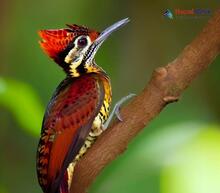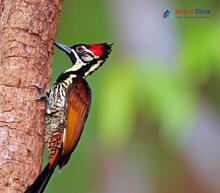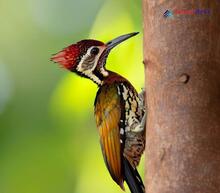Nestled in the majestic Himalayas, Nepal boasts an abundant variety of plant and animal life, including an impressive collection of bird species. Among these feathered treasures is the Chrysocolaptes genus, consisting of woodpeckers with eye-catching features and distinctive behaviors that set them apart from others. Hereby, we'll delve into the captivating realm of these entrancing birds and uncover what makes them truly unique.
Introducing the Chrysocolaptes Genus
The Chrysocolaptes genus is part of the Picidae family, which encompasses various species of woodpeckers, sapsuckers, and flickers. Recognized for their remarkable markings and vivid colors, these birds often display diverse hues of reds, yellows, blacks, and whites. Residing in wooded regions throughout Asia, Chrysocolaptes woodpeckers can be found in nations like Nepal, India, Bangladesh, Indonesia, and the Philippines.
Fascinating Features of Chrysocolaptes Woodpeckers
As medium to large-sized woodpeckers, these birds showcase several intriguing traits that distinguish them from other members of their family. One such characteristic is their exceptional zygodactyl feet; unlike typical birds with three toes pointing forward and one backward, Chrysocolaptes woodpeckers possess two toes facing forward and two backward. This adaptation enables effortless climbing along tree trunks and branches in search of sustenance.
Another noteworthy aspect is their specially designed beak. With a chisel-like tip, this beak allows the birds to penetrate tree trunks and retrieve insects from underneath the bark. Additionally, their elongated tongue is equipped with barbs to help extract insects from crevices.
Distinct vocalizations also contribute to their charm—Chrysocolaptes woodpeckers emit a variety of sounds ranging from crisp calls to resonant drumming. Employed for multiple purposes, these calls facilitate communication with mates, territory establishment, and predator warnings.
Preserving Nepal's Birds
Despite Nepal's vast bird population, environmental shifts and habitat destruction present severe challenges to numerous species. To safeguard the country's avian inhabitants, both the Nepalese government and assorted organizations commit to executing conservation initiatives that emphasize habitat preservation and community education on the significance of birds.
For Chrysocolaptes woodpeckers and additional at-risk bird species in Nepal, conservation endeavors concentrate on protecting forest ecosystems by endorsing sustainable practices within local communities. This approach aims to secure a flourishing future for these extraordinary birds.
A Window into the Chrysocolaptes Universe
The Chrysocolaptes genus provides a singular perspective into the astonishing biodiversity present within Nepal and its neighboring regions. By admiring these mesmerizing woodpeckers and supporting preservation efforts, we can guarantee that these exquisite birds continue to captivate visitors in Nepal's verdant forests for years to come.




